Manufacturer: Asus
UK price (as reviewed): £593.99 (inc. VAT)
US price (as reviewed): $749.99 (exc. tax)
The last few years have seen some of the most exciting developments in the HEDT CPU market with Intel massively expanding its lineup from just eight cores with 2014's Core i7-5950X to 18 cores with 2017's Core i9-7980XE. This has posed challenges for motherboard manufacturers, especially as, according to Asus, many X299 board designs had been finalised prior to Intel shifting to high core count (HCC) CPUs to combat AMD's Threadripper.
Thankfully there weren't too many issues, but once owners of Intel's 18-core CPU began to delid it, pushing frequencies and power draw through the roof, even the likes of the Rampage VI Extreme weren't equipped to deal with this kind scenario, at least not in a purely air-cooled environment. Thankfully, the likes of EK Water Blocks were on hand to add some extra cooling to the equation, but if you just want to water-cool the CPU or don't want to dip your toes into custom liquid-cooling at all, then pairing massively overclocked Intel HCC CPUs with X299 boards can pose problems.
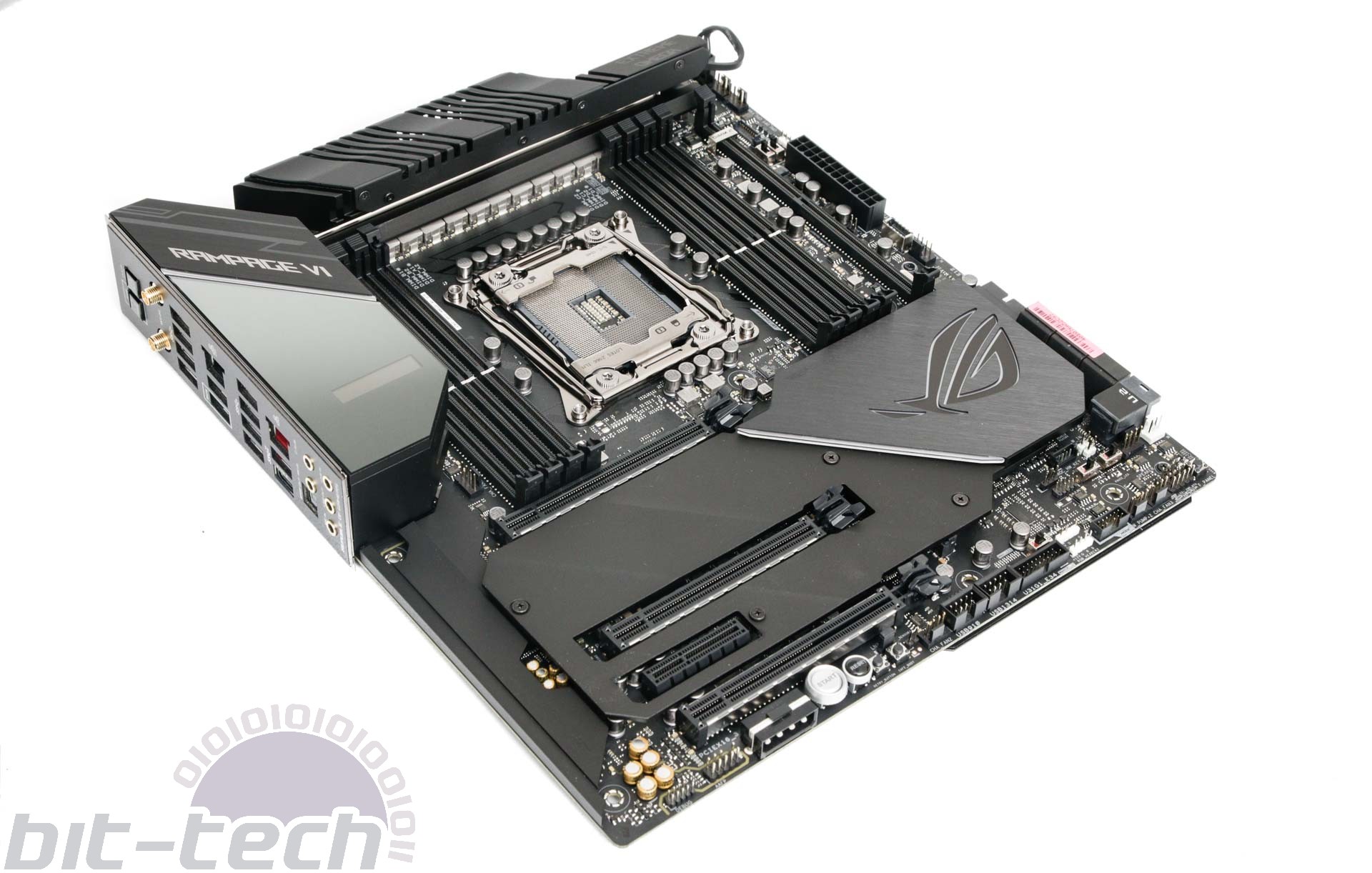
To solve these issues, Asus has somewhat belatedly come up with the ROG Rampage VI Extreme Omega, which follows a similar philosophy in terms of cooling and power delivery to the ROG Zenith Extreme Alpha we looked at recently. Again, we're only looking at potential issues in the upper echelons of CPUs and overclocking rather than this benefiting your typical 10- or 12-core CPU, but we'll see how the board fared with both a Core i9-7900X and Core i9-7980XE later on.
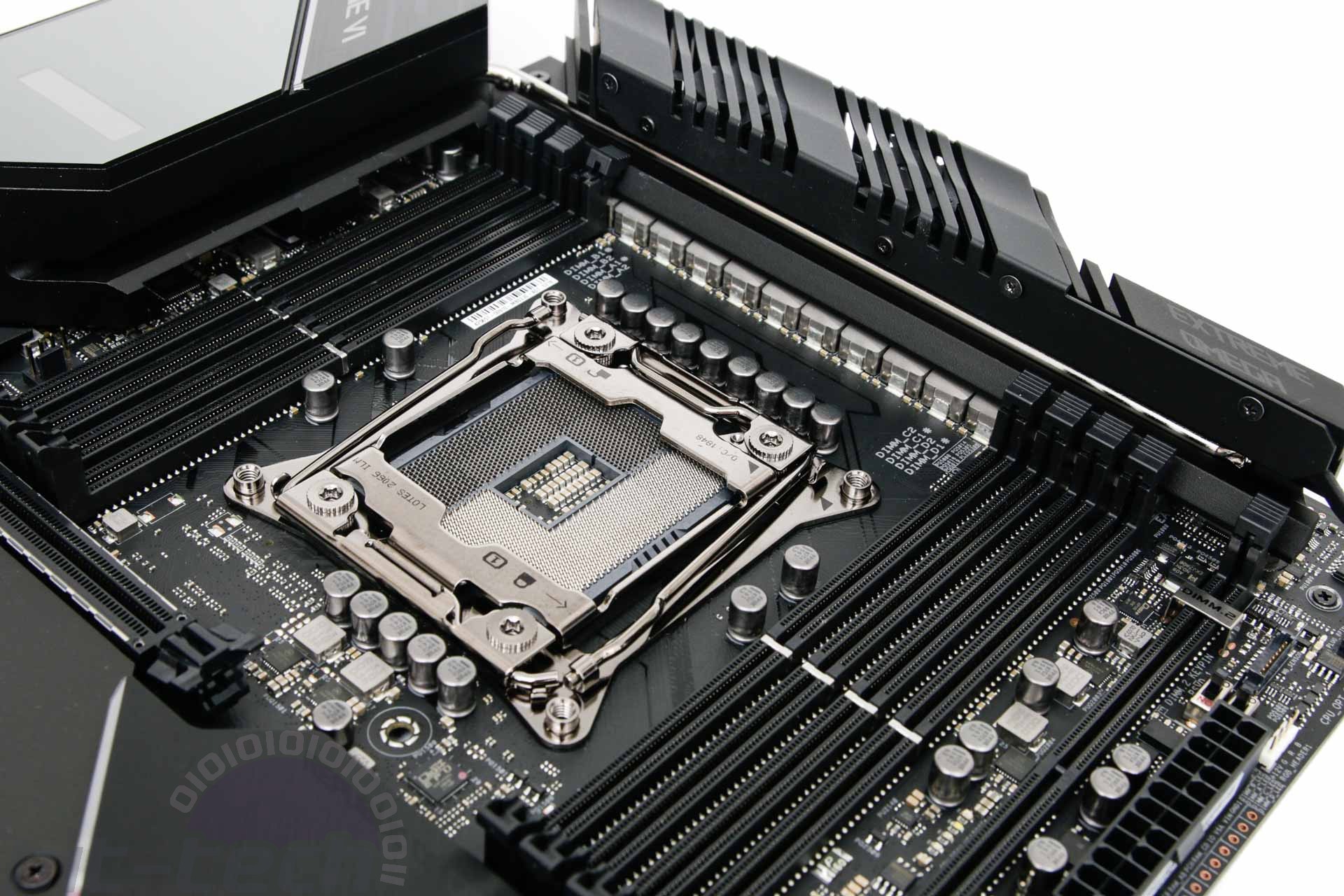
The power delivery features the same 16 power stages as the new Zenith board, teamed in an eight-phase arrangement, which Asus claims acts pre-emptively with with two power stages hardwired to apply current when it's needed, whereas a typical "fire multiple phases at once" approach waits for a large current delta to occur, which can hinder response times and as a result stability too. The resulting larger power and cooling array means that, like the Zenith Extreme Alpha, you're forced to use an included tool to unlatch those DIMM slots, which are now sandwiched between your memory and the heatsinks.
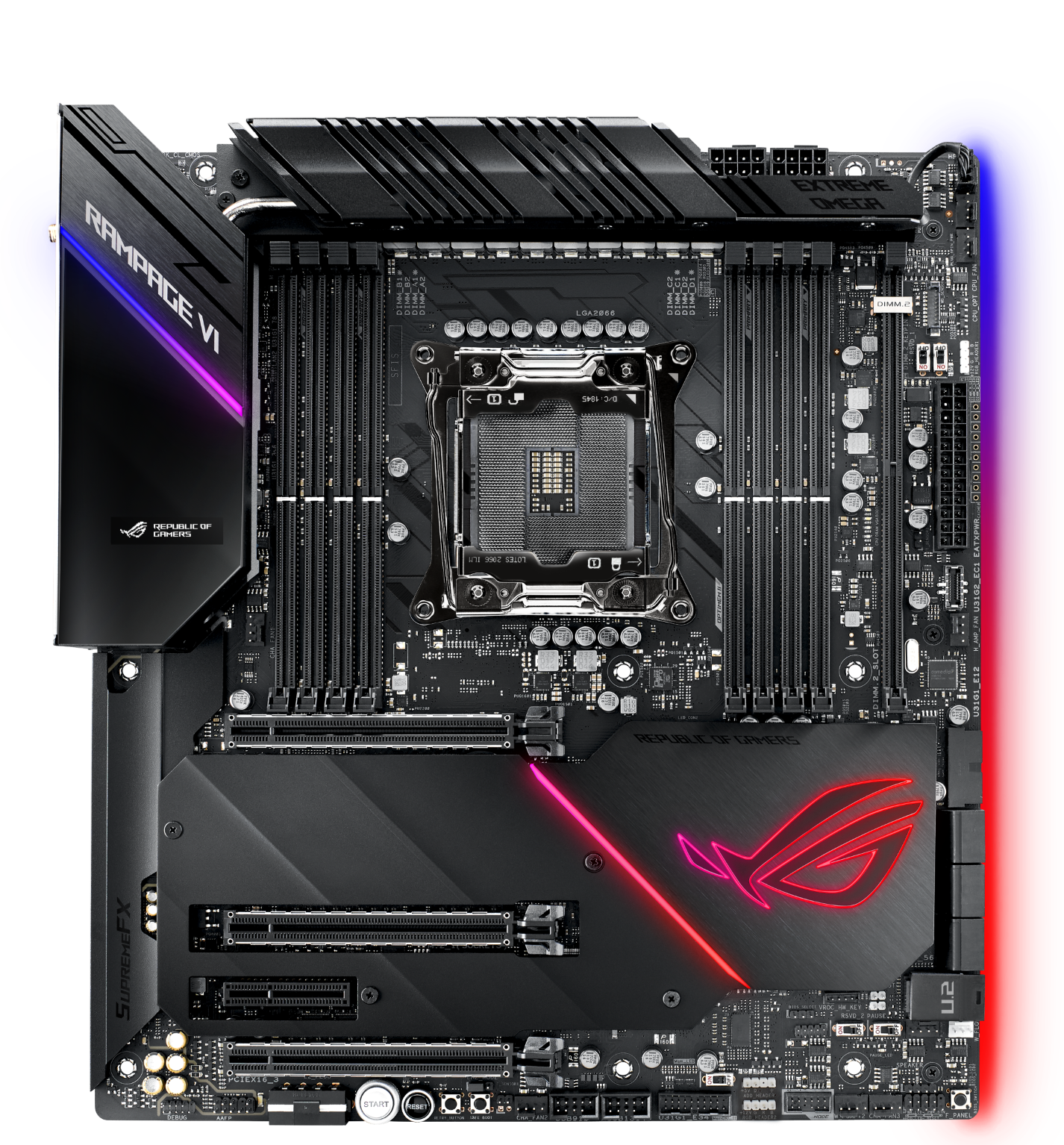
RGB lighting is vibrant but not excessive with the PCH heatsink, I/O shroud and a large diffusing plate underneath dishing out some funkiness, with a pair of four-pin and single three-pin addressable headers on the board as well for your own RGB LED strips. Overall the design isn't dissimilar to its predecessor, but the new board looks far manlier with a power delivery and heatsink arrangement that dwarfs it.
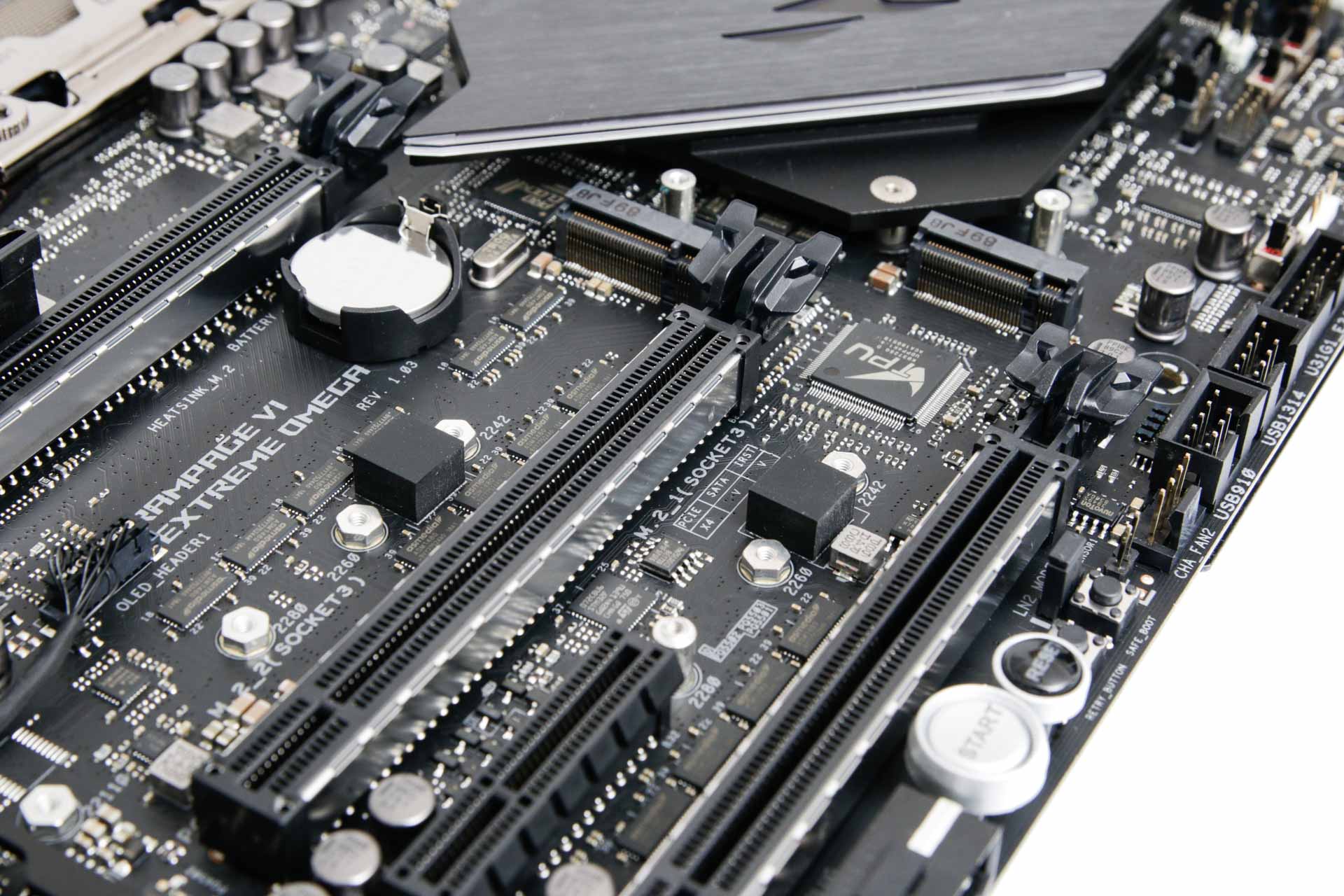
Despite a very similar design, the ROG Zenith Extreme Alpha and ROG Zenith Extreme Alpha differ in a number of areas, aside from the CPUs they support of course. You get a pair of M.2 ports on the Intel-focussed board, with one of these offering both PCIe and SATA 6Gbps M.2 support, while the other is limited to just PCIe M.2 SSDs. The AMD board only has a single M.2 port on the PCB but sports an additional 16x PCIe slot, perhaps wanting to offer a way to eat up Threadripper's massive I/O, which dwarfs even Intel's HEDT platform.
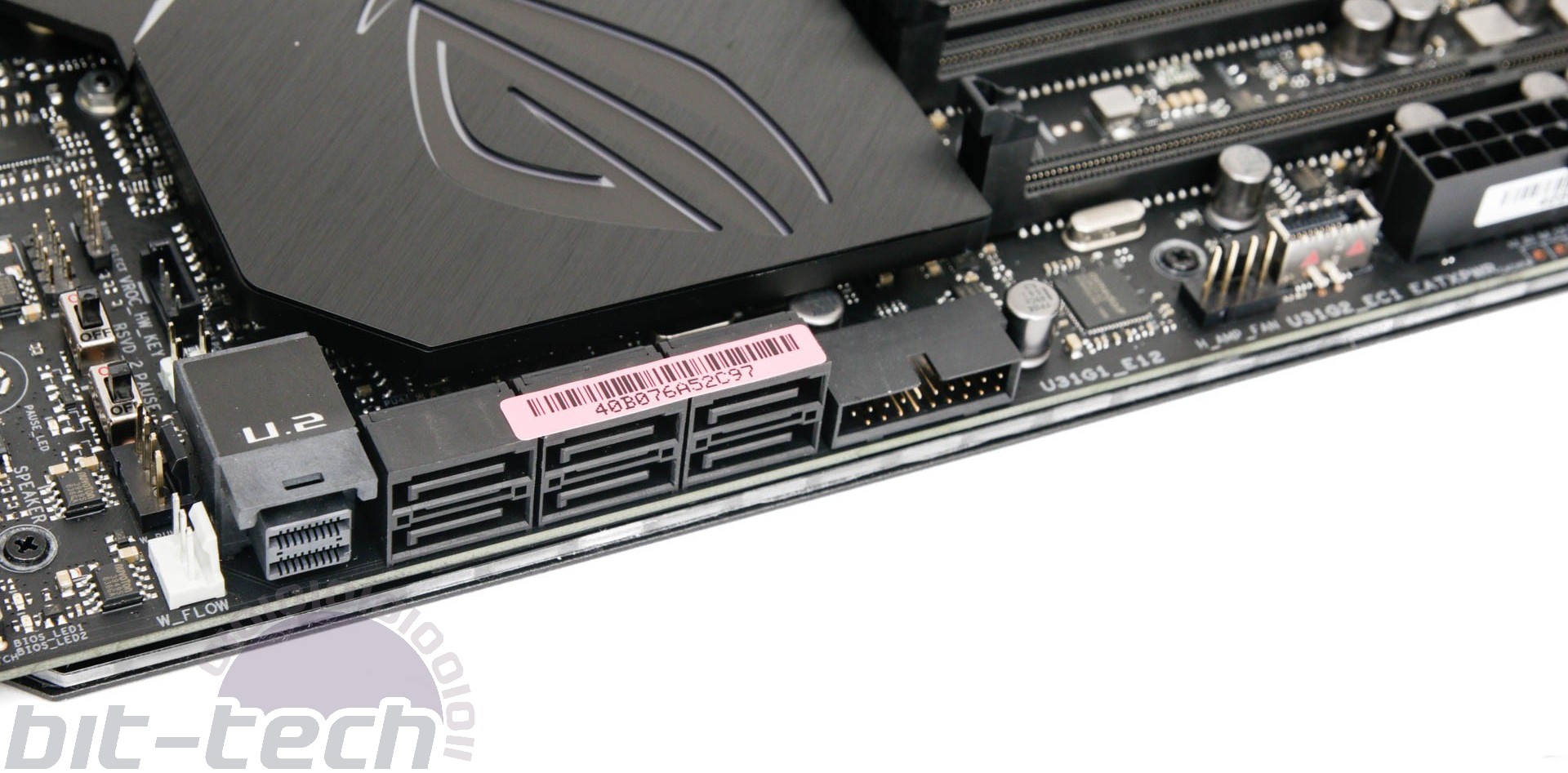
The two boards trade more blows on storage, as the Zenith offers eight SATA 6Gbps ports while the Rampage is limited to six but offers a U.2 port. Admittedly, the latter is becoming slightly redundant seeing as the likes of Intel's 905P SSD is also available in PCIe add-in-card (AIC) format in addition to U.2, but it does at least tick another box. Both boards include the new DIMM.2 module that offers two extra M.2 ports topped with large heatsinks that knocked 16°C off the load temperature of our Samsung 960 Evo. However, on the Rampage here these only support PCIe M.2 SSDs, whereas on the Zenith they cater for both PCIe and SATA-powered M.2 SSDs. Using a SATA M.2 SSD is maybe not a particularly likely scenario, but it's worth pointing out in case you were planning on splashing out on a couple of 2TB SATA M.2 SSDs for a hefty flash amount of mass storage.
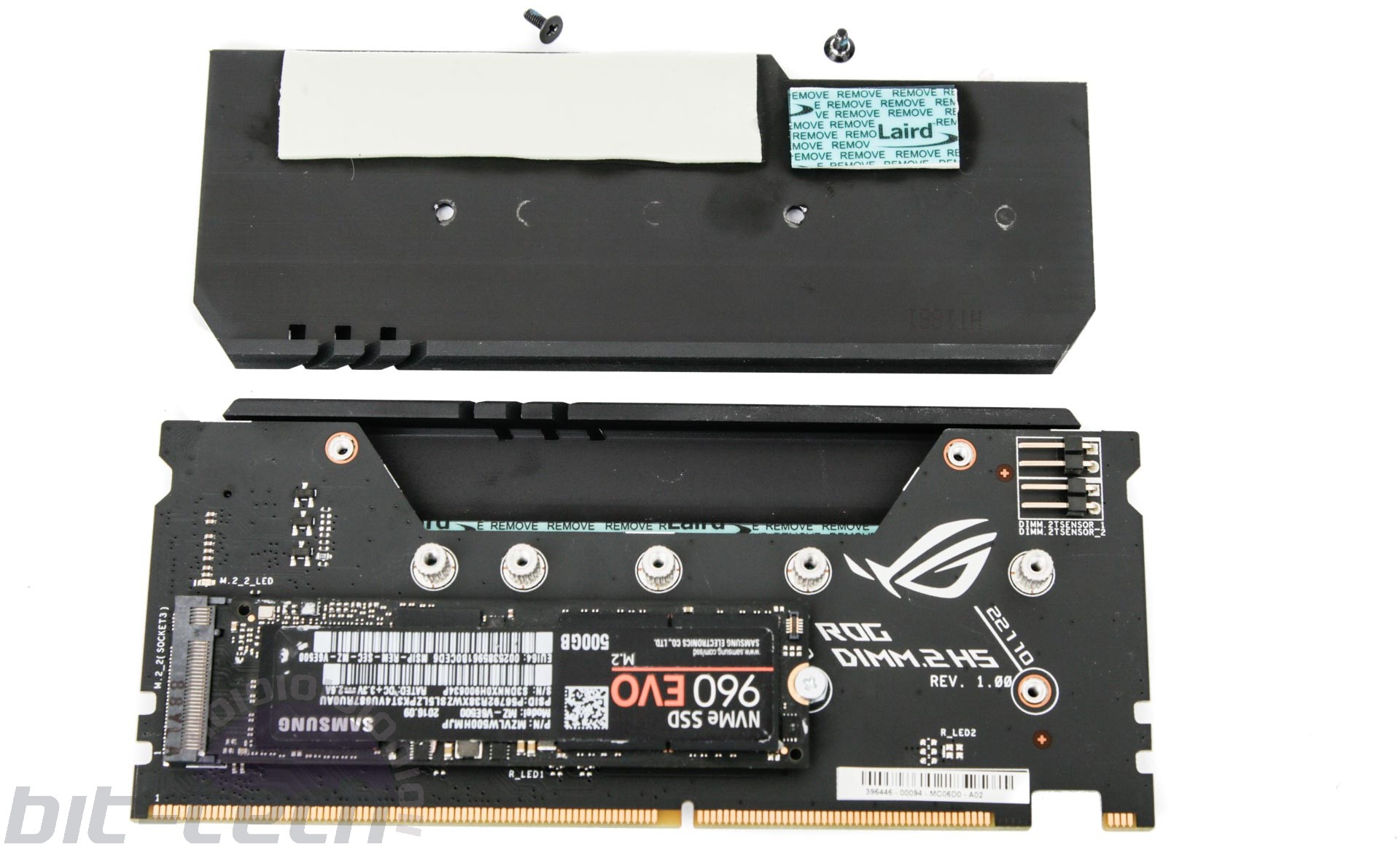
Also similar to the Zenith are the two VRM fans that spin up when the power circuitry hits 60°C. Like the AMD board, though, this rarely happens. In fact, even when we pushed our Core i9-7980XE to 4.5GHz and ploughed through some benchmarks with the system pulling over 450W, the heatsinks were only warm rather than scalding to the touch, and the fans hadn't spun up. Only a 10 minute stint in Prime95 saw them spin up, at which point our cooler was making far more noise than they were.
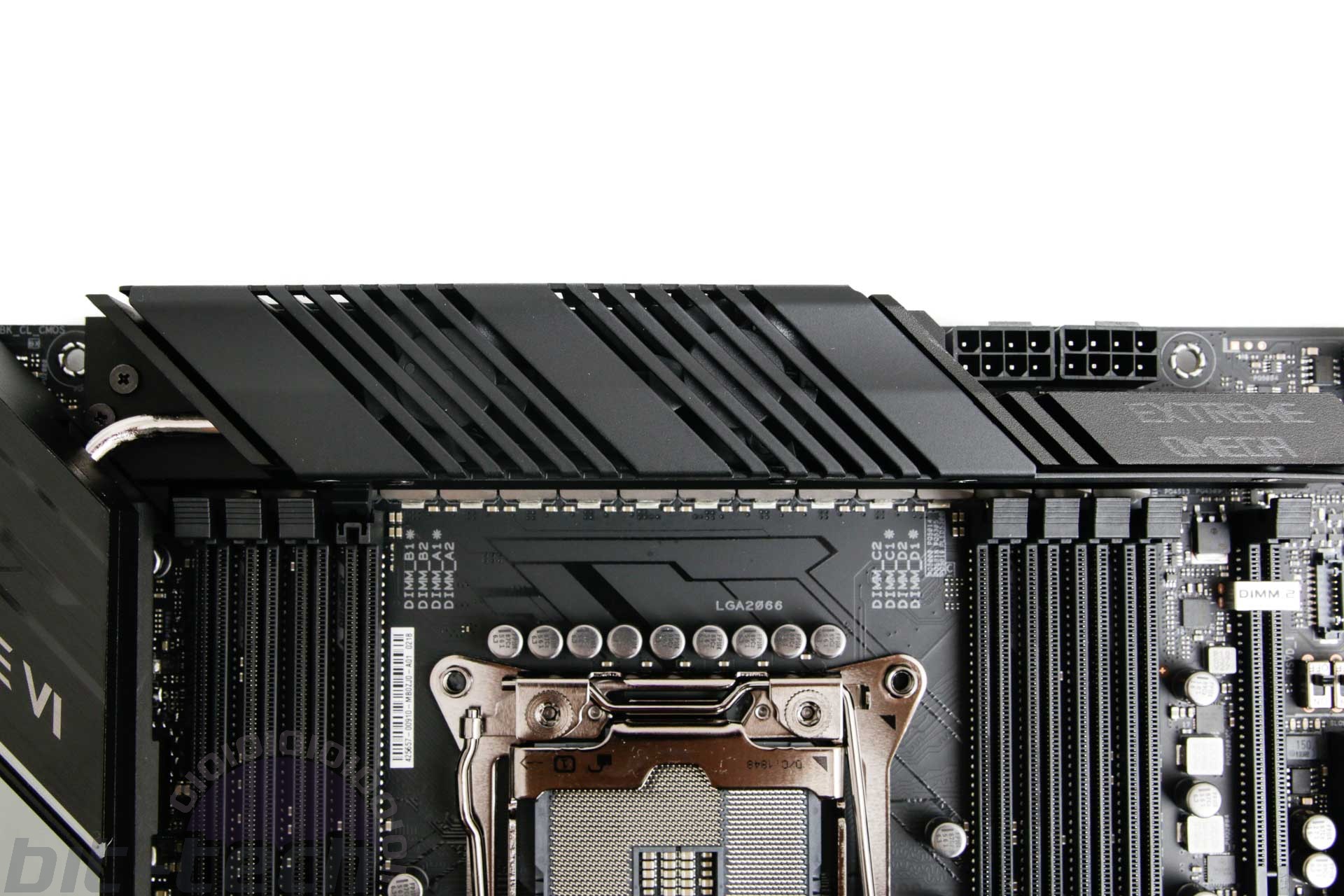
You get the same group of overclocking and testing tools including slow mode, LN2 mode, and Probelt voltage readout points. Stepping down to less exotic cooling, the board has water flow and temperature sensors as well as several 3A/36W fan headers with two dedicated for liquid-cooling pumps. In addition, there's a new header that will support future Rampage-specific water blocks that can feed flow, temperature, and leakage data, plus you get the usual power, reset, CMOS clear, and USB BIOS Flashback buttons.
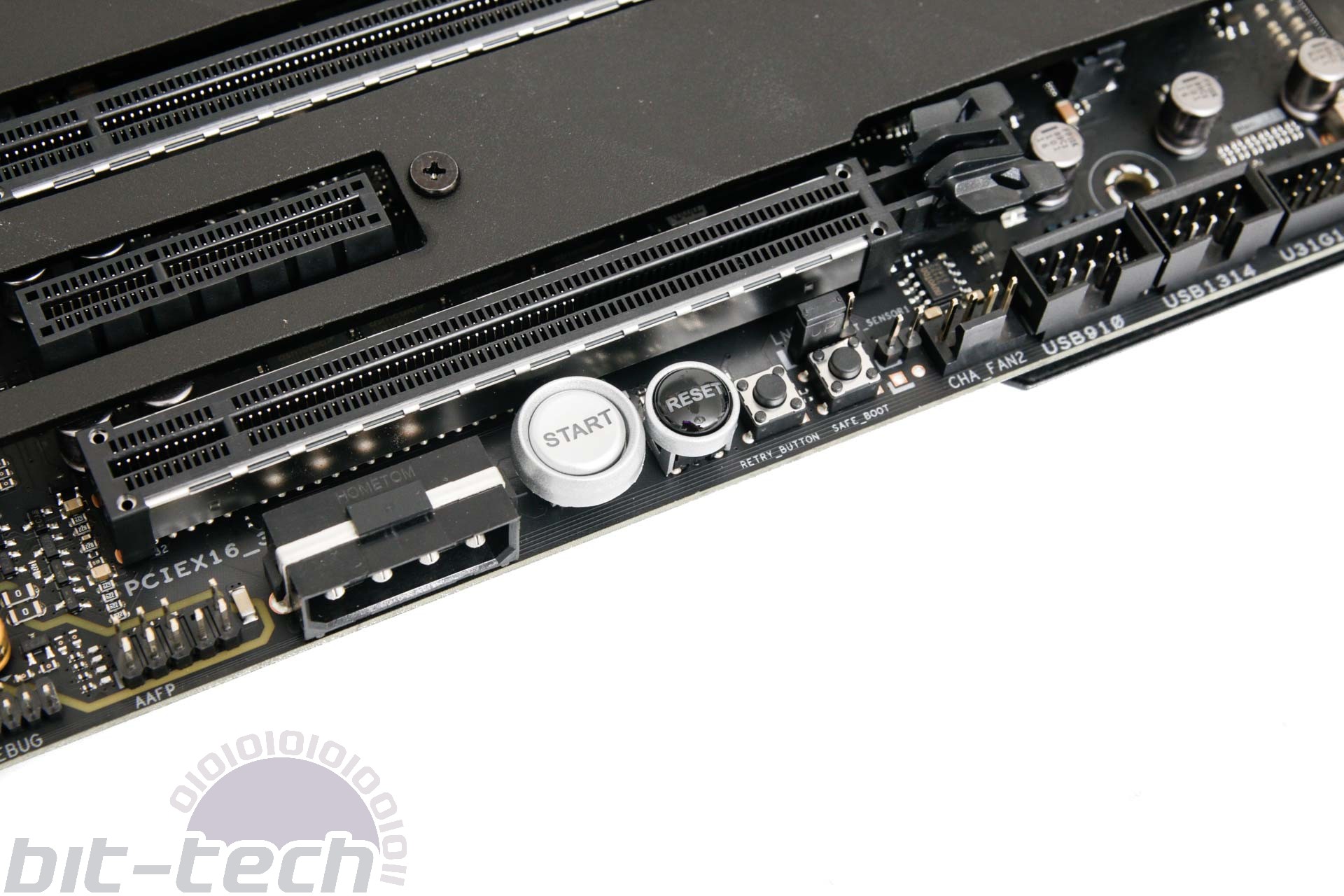
Another shared feature with the Zenith is the fan expansion card, which can be mounted in a spare 2.5" bay. This adds an additional six four-pin fan headers, three four-pin RGB LED headers, and three thermal probe headers and connects using a proprietary Node connector.
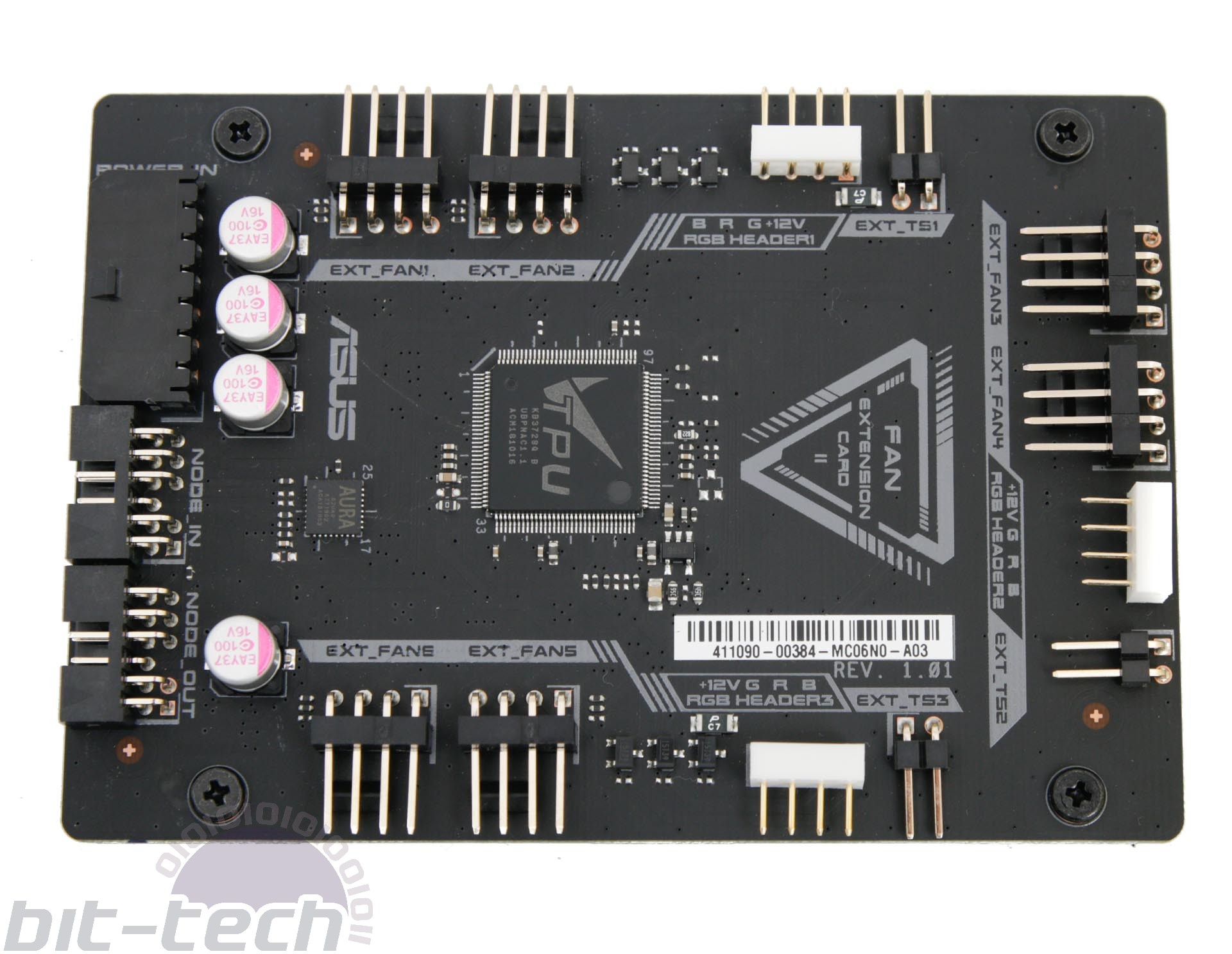
Another snazzy little addition is the LiveDash OLED, which can be customised to show images or data readouts such as CPU frequency, temperature, voltage, or fan speeds, enclosed in a mirrored top on the I/O shroud.
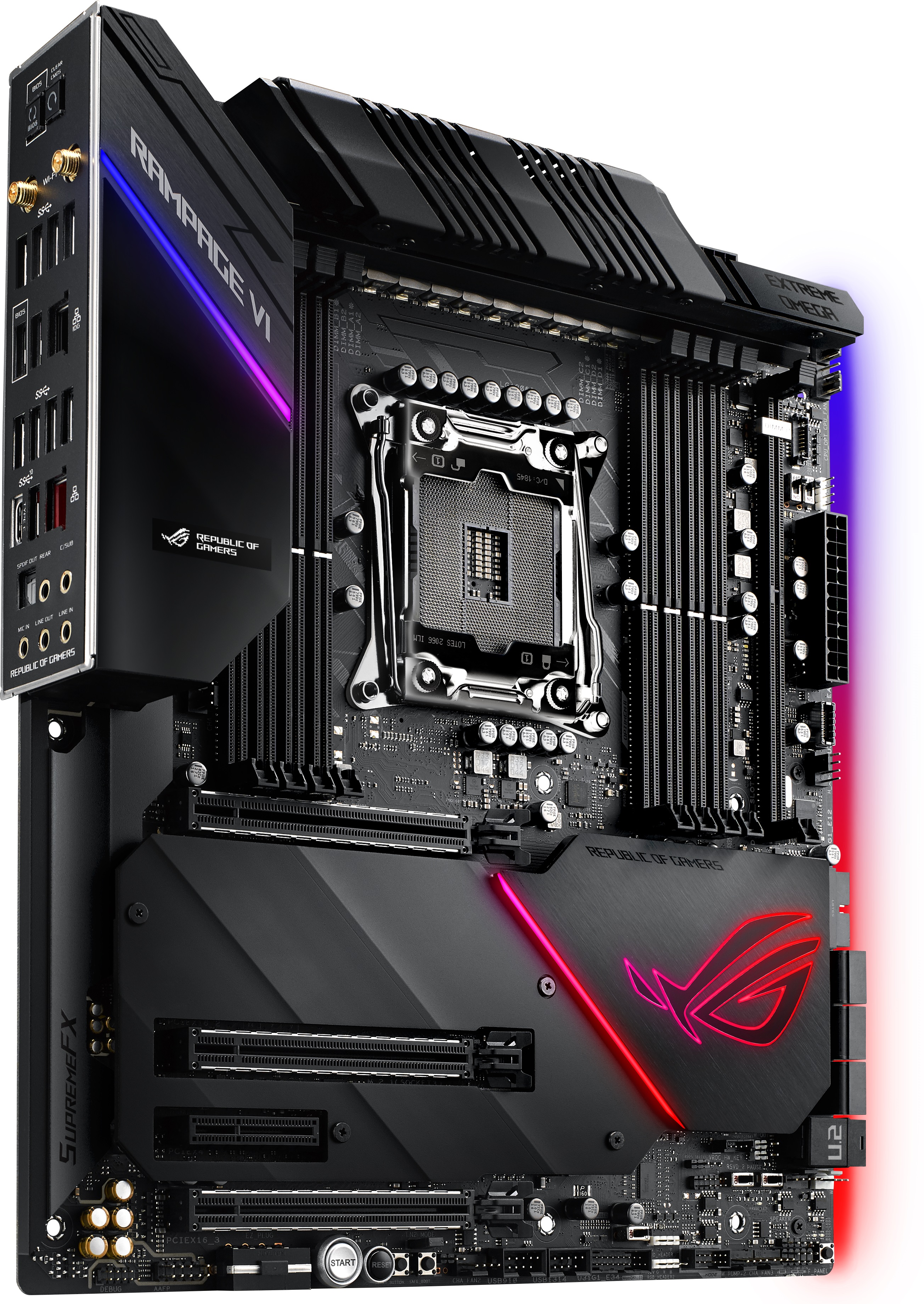
Finally we get to the I/O panel, which offers a home to Wi-Fi aerials for the onboard 802.11ac Wi-Fi, 10 USB 3.0 ports, plus single Type-A and Type-C USB 3.1 ports. Audio as you'd expect is provided by a tweaked Realtek ALC1220 codec, with gold illuminated mini-jacks, and the I/O shield is integrated too.
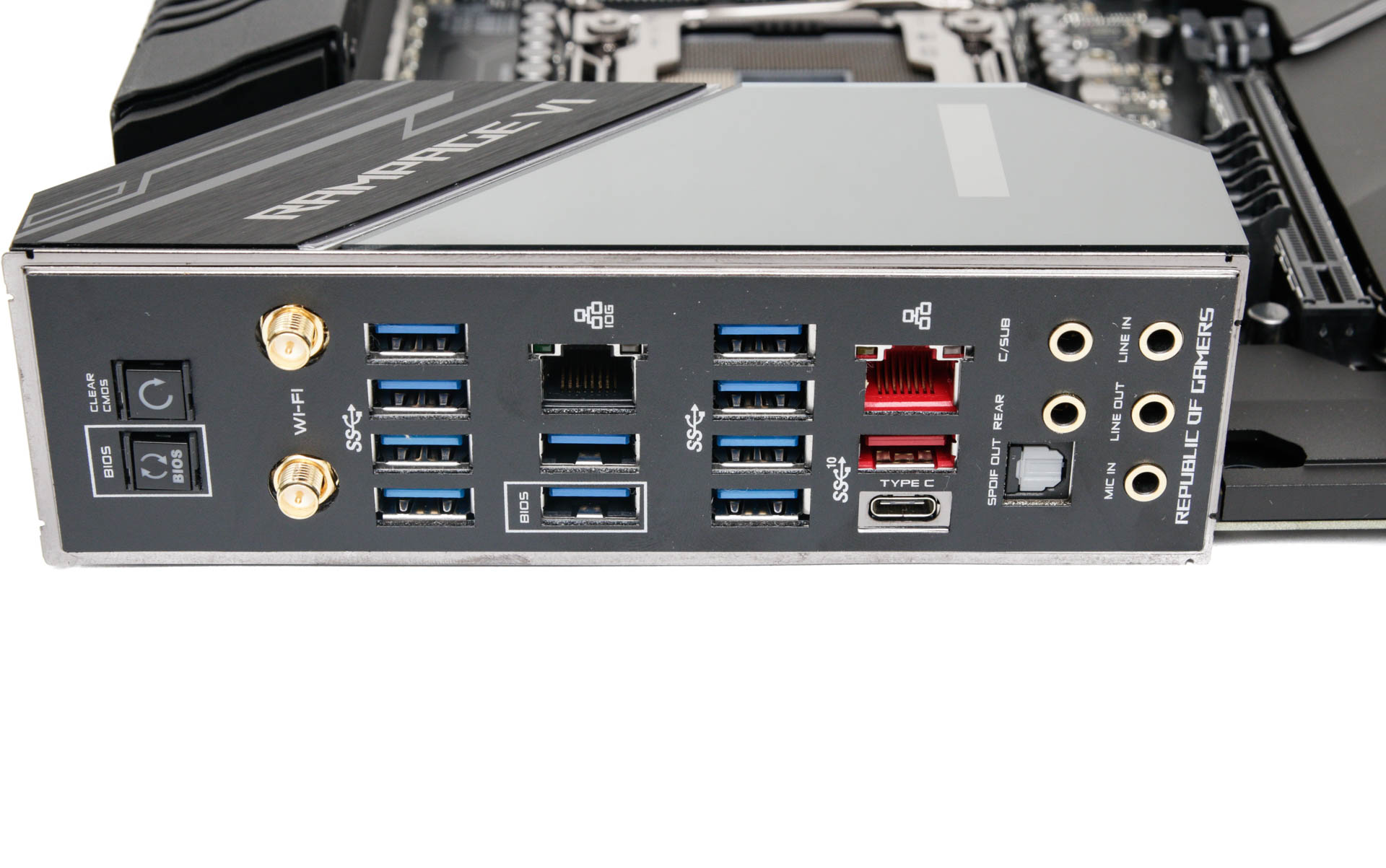
Specifications
- Chipset Intel X299
- Form factor ATX
- CPU support Intel Socket LGA 2066 (Skylake-X, Kaby Lake-X)
- Memory support Quad-channel, eight slots, max 128GB
- Sound Eight-channel Realtek ALC S1220A
- Networking 1 x Aquantia 10 Gigabit Ethernet, 1 x Intel I219V Gigabit Ethernet, 802.11ac Wi-Fi, Bluetooth 5.0
- Ports 4 x M.2 PCIe 3.0 x4 32Gbps (3 x PCIe up to 22110, 1 x PCIe/SATA 6Gbps up to 2280), 6 x SATA 6Gbps, 1 x USB 3.1 Type-A, 1 x USB 3.1 Type-C, 1 x USB 3.1 Type-C header, 14 x USB 3.0 (4 via headers), 4 x USB 2.0 (4 via headers), 2 x LAN, audio out, line in, mic, Optical S/PDIF out
- Dimensions (mm) 305 x 277
- Extras Fan expansion card, thermal probe cables, driver USB flash drive, RGB extension cables

MSI MPG Velox 100R Chassis Review
October 14 2021 | 15:04

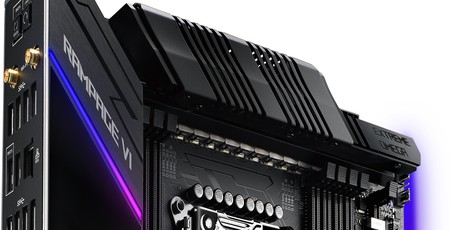

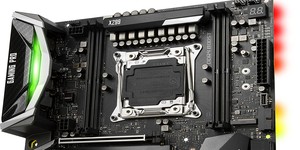
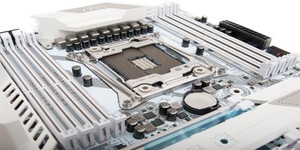




Want to comment? Please log in.